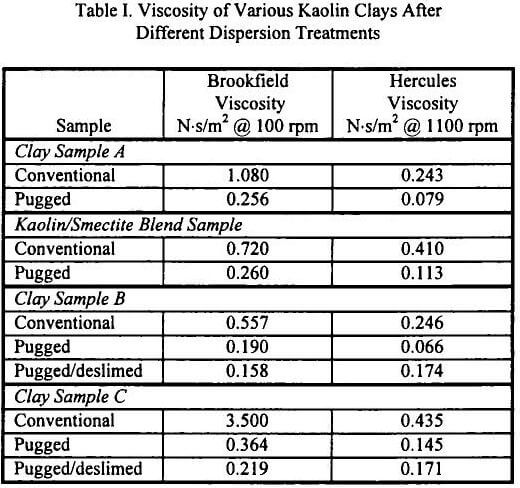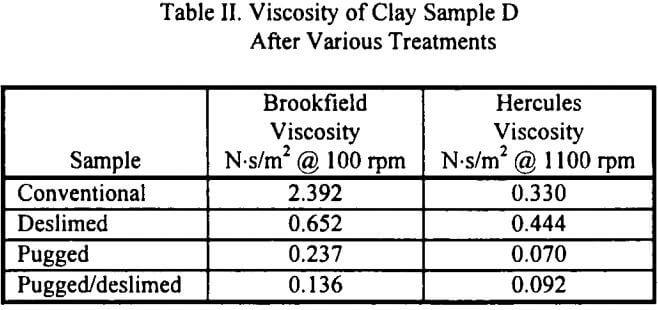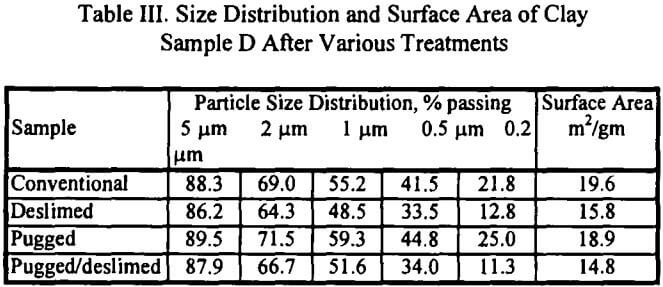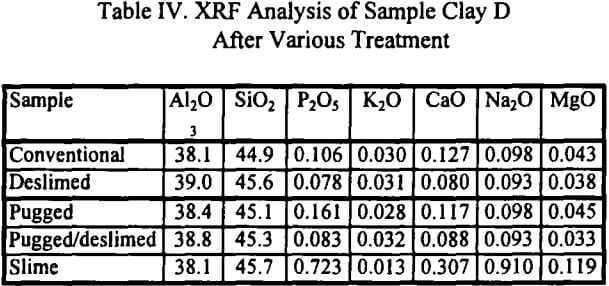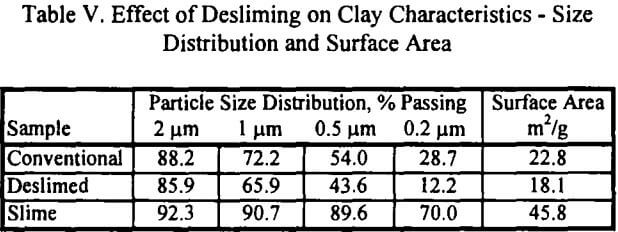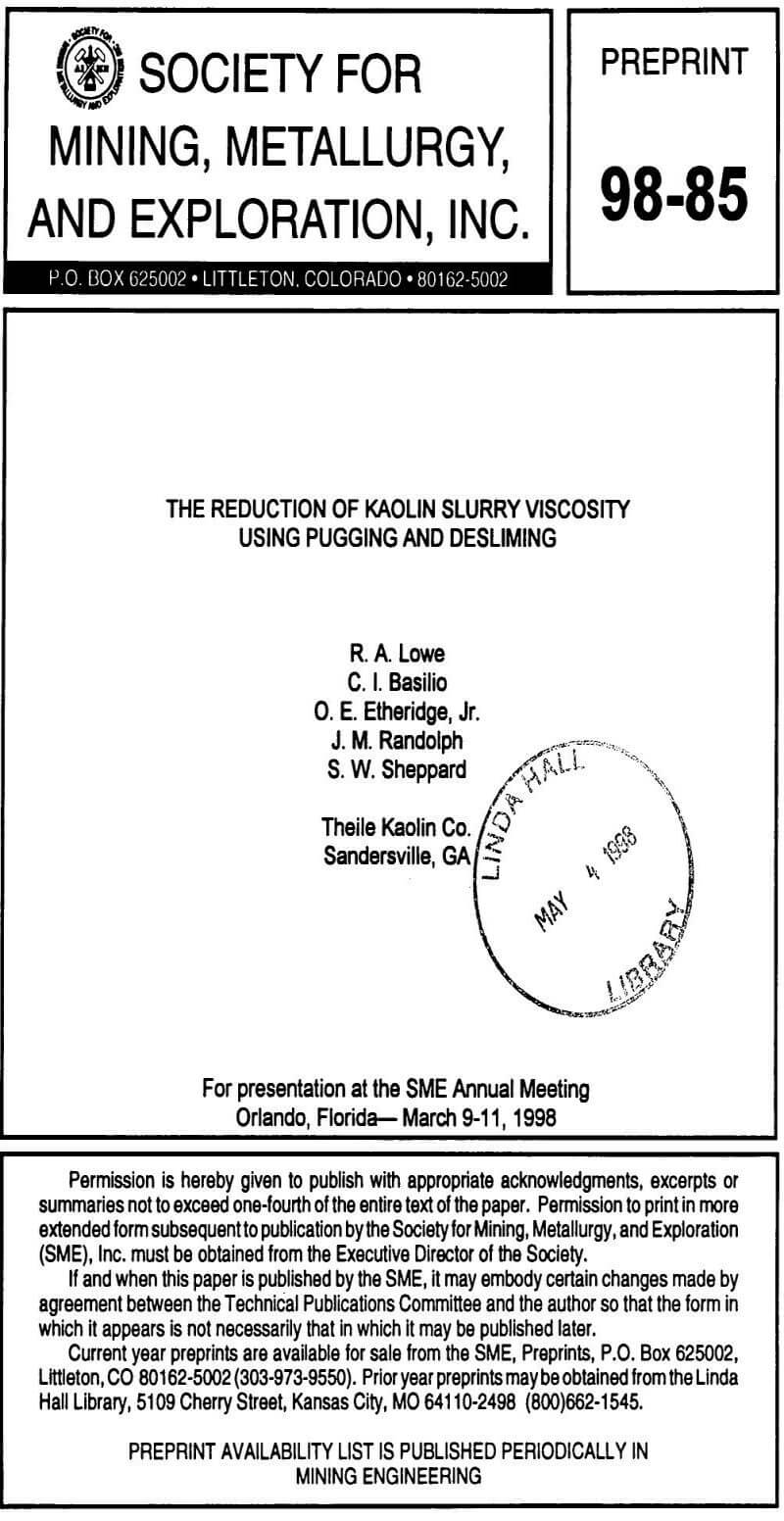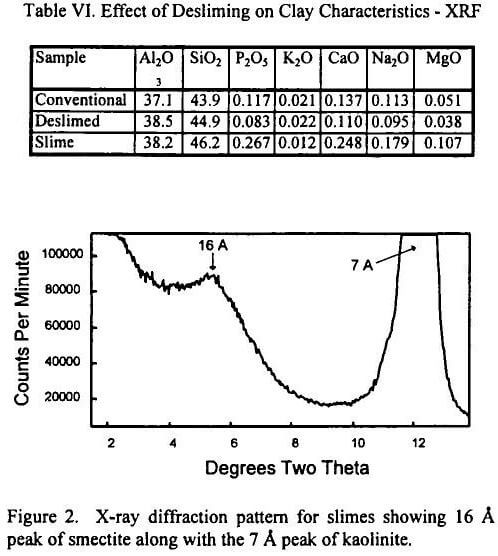Here, the effects of different dispersion methods on improving the rheology of kaolin slurries are studied. The efficacy of desliming the kaolin slurry on reducing the viscosity of the kaolin crude is also investigated and the results are presented. Finally, the mechanism for the improvements in viscosity with the use of these dispersion methods is explained.
Coarse-grained Cretaceous kaolins from Georgia with different rheologic properties were used in this study. The kaolin crudes were processed using two different dispersion methods. The first method is a conventional method where the kaolin sample is dispersed at 35% solids using a Cowles dissolver. The sample was blunged for five minutes at 4000 rpm using 1000 g/t sodium hexametaphosphate as a dispersant and soda ash to adjust the pH to 7.
The second dispersion method, as disclosed in U.S. Patent No. 5,593,490, involves mechanically working the crude clay sample using a Read sigma-blade mill (i.e., kneader or pug mill). In this method, the sample is pugged at 74% solids using a set amount of energy. Afterwards, the pugged crude is blunged in a Cowles dissolver at 35% solids with 1000 g/t sodium hexametaphosphate and soda ash (to adjust the pH to 7) added.
In some cases, the dispersed slurry produced after dispersion was deslimed using a centrifuge to remove the particles less than 0.2 micron (in equivalent spherical diameter). In all cases, the dispersed slurries were screened at 270 mesh and then spray dried. The viscosity of the spray dried material redispersed to 70% solids was then measured.
The rheologic properties of the clays were characterized at 70% solids by measuring the low-shear viscosity using a Brookfield RVDV-1+ Viscometer and the high shear viscosity using a Hercules Hi-Shear Viscometer (Kaltec Model DV-10). Note that all the Brookfield viscosity measurements were carried out at 100 rpm while the Hercules viscosities were measured at 1100 rpm. Samples of the spray-dried kaolin were also further characterized using particle size distribution measurement (Micromeritics Sedigraph 5100), BET surface area measurement (Micromeritics ASAP 2010), X-ray Fluorescence (XRF) spectroscopy (Siemens SRS 303), and X-ray diffraction (Scintag PAD V Diffractometer). Note that the particle size distributions are given in terms of equivalent spherical diameter since the kaolin particles are not spheres. This means that a kaolin particle of 1 µm equivalent spherical diameter would settle at the same rate as a true 1 pm diameter spherical particle.
The different clay samples were dispersed using the conventional low-solids blunging method and high-solids mechanical working or pugging. The slurries produced by the two dispersion methods were then characterized by their low and high-shear viscosities, particle size distribution, surface area, and their composition. Table I shows the results of the viscosity measurements for the different high-viscosity clay samples dispersed using the two different dispersion methods. Also shown in Table I are the rheologic properties of a good viscosity coarse-grained Cretaceous kaolin (i.e., Brookfield viscosity of 0.223 N-s/m² (223 cP) blended with 1.6% clay (Twiggs Clay) containing smectite, which was dispersed using different dispersion methods.
Clay Sample A is a high viscosity clay with a Brookfield viscosity 1.08 N-s/m² (1080 cP) after conventional blunging and dispersion. On the other hand, pugging the sample prior to low-solids blunging reduced the Brookfield viscosity to 0.256 N-s/m² (256 cP) while the Hercules viscosity at 1100 rpm was reduced from 0.243 (243 cP) to 0.079 N-s/m² (79 cP). The good viscosity kaolin sample blended with smectite (Twiggs clay) showed a high viscosity after the addition of the smectite. Using pugging, both it’s low- (i.e., Brookfield viscosity) and high- (i.e., Hercules viscosity) shear viscosities were reduced significantly. Similar trends are observed with the medium- and high-viscosity kaolin crude samples.
